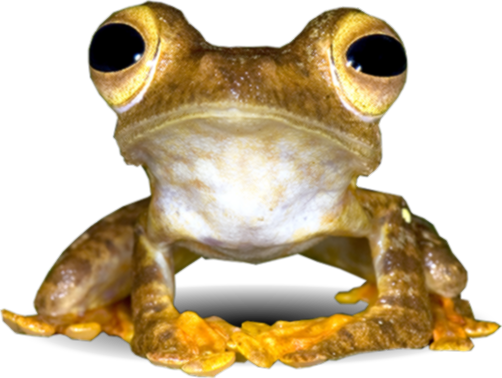Melaleuca cajuputi belongs to the Myrtaceae family and is locally known as “Gelam” or “Kayu Putih” in the Malay community. In Kelantan, Malaysia, it is also referred to as “Gelam Tikus”. The genus name Melaleuca is derived from the Greek words melas (black) and leukos (white), referring to the appearance of its trunk and branches. Meanwhile, the species epithet is derived from the Malay words “kayu” (wood) and “putih” (white), describing its distinctive white papery bark.
It is easily recognisable from a distance due to its flaky, papery white bark, which resembles the pages of a book and swells when exposed to moisture or water. The trunks of mature trees have a soft, sponge-like texture when pressed. In areas frequently submerged for long periods, the lower part of the trunk often develops a dark colouration. The leaves of Melaleuca cajuputi are greyish-green, lanceolate to elliptic, with a velvety-textured upper surface and a pointed apex. When crushed, the leaves release a fragrant scent similar to that of tea tree leaves or vapour oil. The flowers are whitish to green-white and have a bottlebrush shape. Studies have found that nectar secretion peaks in volume in the early morning when its sugar content is at its lowest (Quang Tan, 2008). During this time, a large number of insects can be seen swarming around the flowers. The flowers attract the stingless bee Heterotrigona itama, which is a pollinator (Mamat et al., 2023), along with various other pollinators. Additionally, the nectar also attracts small mammals, such as squirrels (Wee, 2014).
The Melaleuca tree is widely harvested for its timber, which has various uses in the construction and agriculture industries. It is highly durable when exposed to water and is naturally resistant to termite attacks, making it a popular choice among local communities. In addition, its abundance in the surrounding lowland swampy areas and coastal forests, where it naturally grows, further contributes to its widespread use. In the past, Melaleuca timber was commonly used for charcoal production, bridge piling, vessel construction as knee joints, local house construction and fencing (Jamilah et al., 2011; Masitah et al., 2015). Some small agricultural farms still utilise it as stakes for chilli plants and other crops because it is cost-effective, as the timber is freely available. This tree is also becoming increasingly popular for urban and garden landscaping, likely due to its resilience to the country’s hot climate.
Meanwhile, Melaleuca leaves have significant medicinal value. The essential oil extracted from its leaves and twigs is commonly used by Malay traditional medicine practitioners as an ingredient in therapeutic oils. This essential oil is believed to help treat wounds, stomach cramps, cough, acne, insect bites, anxiety, cholera, muscle pain and various ailments (Arif Azimi et al., 2023; Mamat et al., 2023; Al-Abd et al., 2015). Additionally, numerous health, skincare, beauty and cleaning products based on Melaleuca essential oil have been commercialised by both local and international entrepreneurs.
This species often dominates an area and eventually forms its own forest. This is because it surpasses other species in resilience and ability to withstand extreme climates, whether dry or wet, for prolonged periods. Recent field inventories conducted in Melaleuca forests in Peninsular Malaysia showed that other tree species are present in small proportions, accounting for approximately 20.2% of the forest composition. These include Acacia mangium (Akasia), Carallia brachiate (Meransi), Syzygium sp. (Kelat), Cyrtophyllum fragrans (Tembusu) and Macaranga gigantea (Mahang) (Muhamad Afizzul, unpublished data).
Melaleuca forests in Malaysia are declining, with the current estimated area at approximately 22,879.33 hectares, found only in seven states (Muhamad Afizzul et al., 2024). Terengganu has the largest area of Melaleuca forest at 64.7%, followed by Kelantan at 27.4%. The remaining 7.9% of such forests are distributed across five states: Johor (2.7%), Selangor (2.3%), Melaka (1.8%), Negeri Sembilan (1.0%) and Sarawak (0.1%).
Ecologically, Melaleuca forests are important habitats for various species, such as birds, bees, pitcher plants (periuk kera) and sedges (kercut) (Jamilah et al., 2011 & Nor Hizami et al., 2020). Some bird species nest and breed on the forest floor, while bees benefit from the year-round flowering of Melaleuca trees which provide a continuous source of nectar. This consistent bloom supports wild honey production, a long-standing tradition that offers a vital source of income for local communities. In certain Melaleuca forest areas in Terengganu, thriving populations of periuk kera (Nepenthes spp.) and kercut (Lepironia articulata) can be found. Periuk kera is seasonally harvested to prepare “lemang periuk kera”, a festive delicacy popular during Hari Raya. Meanwhile, kercut, a plant valued for traditional weaving, is used to craft handmade items such as mats, baskets, hats and bags.
The decline of Melaleuca forests has become an increasing concern, primarily driven by deforestation. Large areas have been cleared to accommodate expanding settlements, infrastructure projects and agricultural activities. One of the key factors exacerbating this loss is the prevalent lack of legal protection (pers. comm.). Most Melaleuca forests are not gazetted as forest reserves, leaving them vulnerable to exploitation. Therefore, urgent conservation and sustainable management strategies are needed to prevent biodiversity loss, habitat destruction and disruption of vital ecosystem services. Recommendations include formal gazettement of the remaining Melaleuca forests as protected reserves, enforcement of land-use regulations, restoration of degraded sites through replanting, and promoting community-based forest management to encourage local stewardship and sustainable use of forest resources. By doing so, we not only preserve the natural resources but also sustain the livelihoods of local communities.
